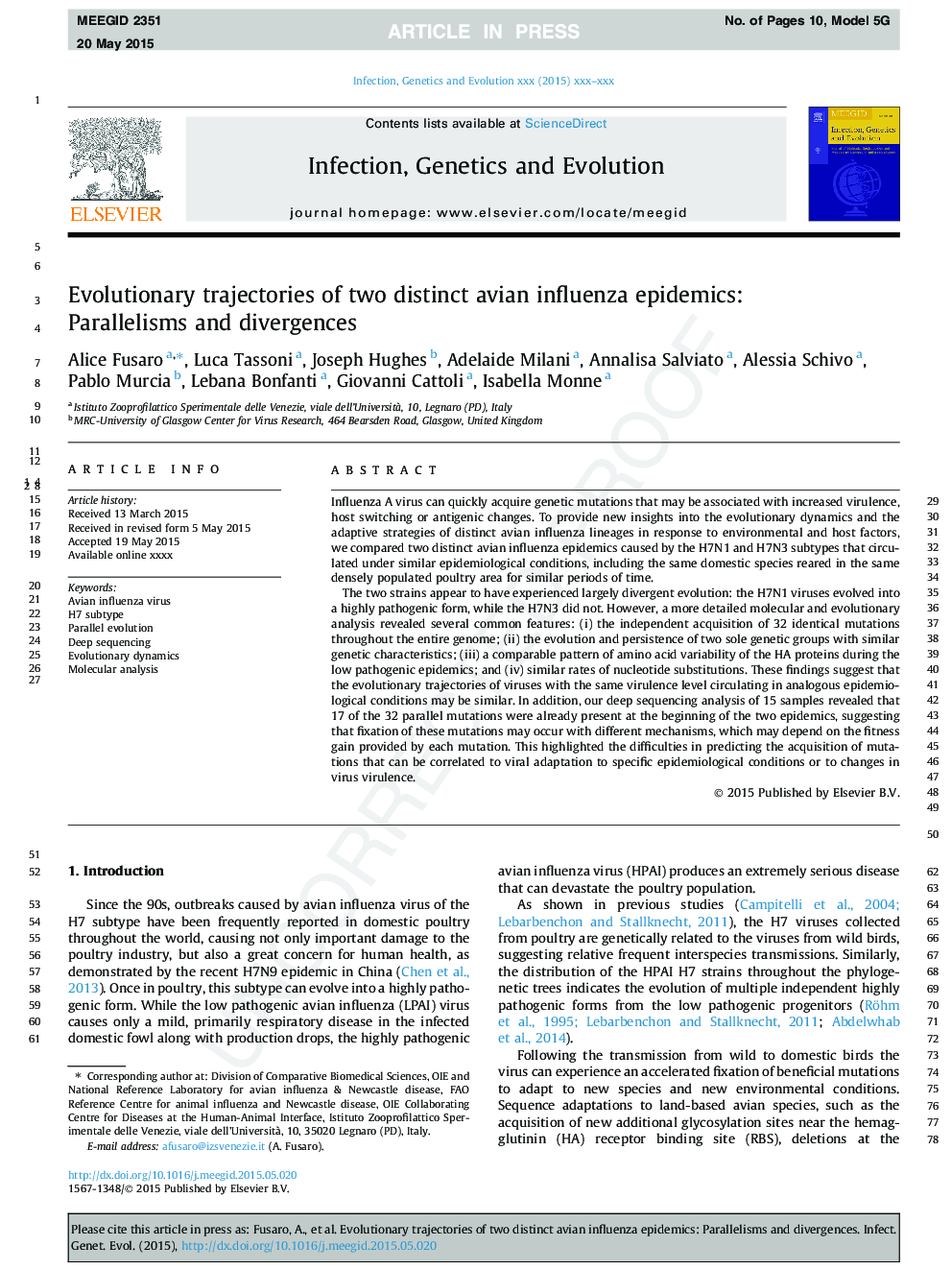| Article ID | Journal | Published Year | Pages | File Type |
|---|---|---|---|---|
| 5909058 | Infection, Genetics and Evolution | 2015 | 10 Pages |
Abstract
The two strains appear to have experienced largely divergent evolution: the H7N1 viruses evolved into a highly pathogenic form, while the H7N3 did not. However, a more detailed molecular and evolutionary analysis revealed several common features: (i) the independent acquisition of 32 identical mutations throughout the entire genome; (ii) the evolution and persistence of two sole genetic groups with similar genetic characteristics; (iii) a comparable pattern of amino acid variability of the HA proteins during the low pathogenic epidemics; and (iv) similar rates of nucleotide substitutions. These findings suggest that the evolutionary trajectories of viruses with the same virulence level circulating in analogous epidemiological conditions may be similar. In addition, our deep sequencing analysis of 15 samples revealed that 17 of the 32 parallel mutations were already present at the beginning of the two epidemics, suggesting that fixation of these mutations may occur with different mechanisms, which may depend on the fitness gain provided by each mutation. This highlighted the difficulties in predicting the acquisition of mutations that can be correlated to viral adaptation to specific epidemiological conditions or to changes in virus virulence.
Keywords
Related Topics
Life Sciences
Agricultural and Biological Sciences
Ecology, Evolution, Behavior and Systematics
Authors
Alice Fusaro, Luca Tassoni, Joseph Hughes, Adelaide Milani, Annalisa Salviato, Alessia Schivo, Pablo R. Murcia, Lebana Bonfanti, Giovanni Cattoli, Isabella Monne,
